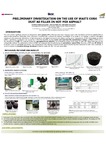Mostrar o rexistro simple do ítem
Preliminary investigation on the use of waste cork dust as filler in hot-mix asphalt
| dc.contributor.author | Pasandín, A.R. | |
| dc.contributor.author | Galán-Díaz, Juan José | |
| dc.contributor.author | Pérez Pérez, Ignacio | |
| dc.date.accessioned | 2021-01-27T18:39:49Z | |
| dc.date.available | 2021-01-27T18:39:49Z | |
| dc.date.issued | 2019 | |
| dc.identifier.citation | Pasandín, A.R., Galán, J.J., Pérez, I. (2019) Preliminary investigation on the use of waste cork dust as filler in hot-mix asphalt (poster). In: Cork in Science and Applications 2019. New Trends in Cork Innovation: From the Wine Industry to the New Applications. Palafrugell (Girona): Institut Catalá del Suro. | es_ES |
| dc.identifier.uri | http://hdl.handle.net/2183/27240 | |
| dc.description | Este póster foi presentado no congreso "Cork in Science and Applications 2019. New Trends in Cork Innovation: From the Wine Industry to the New Applications" que foi organizado polo Institut Catalá del Suro e que tivo lugar en Palafrugell (Girona) o 22 e 23 de maio de 2019. | es_ES |
| dc.description.abstract | [Abstract:] The cork contains significant amounts of a biopolymer called suberin (45%). Polymers have been frequently used in the manufacture of hot-mix asphalt (HMA) to improve their properties. At the Universidade da Coruña (UDC), a preliminary investigation was carried out in which the feasibility of using waste cork dust from the manufacture of plugs, as filler in the manufacture of HMA was analyzed. Firstly, the aggregate-binder adhesion was analyzed by means of two types of tests: the boiling water test and the rolling bottle method. The performance of the cork filler was compared with the performance of conventional natural filler. In both tests it was obtained that with the cork filler, the aggregate-binder adhesion was better than with the natural filler. Secondly, a HMA type AC 22 bin S was manufactured, with a bitumen content of 3.8%. Indirect tensile test after immersion in water were conducted, in order to compare the moisture damage resistance of mixtures made with filler cork and natural filler. It was concluded that the filler cork helped to slightly improve the water resistance of the mixture. Although further investigation is needed, it can be stated that the filler cork could replace the conventional natural filler in the production of HMA. | es_ES |
| dc.language.iso | eng | es_ES |
| dc.subject | Hot-mix asphalt | es_ES |
| dc.subject | Waste cork dust | es_ES |
| dc.subject | Filler | es_ES |
| dc.subject | Adhesion | es_ES |
| dc.subject | Moisture damage resistance | es_ES |
| dc.title | Preliminary investigation on the use of waste cork dust as filler in hot-mix asphalt | es_ES |
| dc.type | info:eu-repo/semantics/conferenceObject | es_ES |
| dc.rights.access | info:eu-repo/semantics/openAccess | es_ES |
| UDC.conferenceTitle | Cork in Science and Applications 2019. New Trends in Cork Innovation: From the Wine Industry to the New Applications. (2019. Palafrugell (Girona)) | es_ES |






